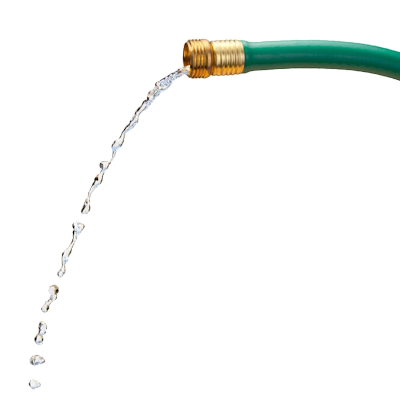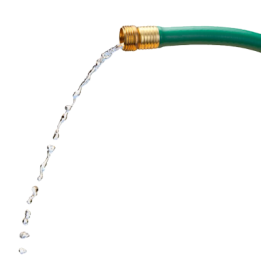
Blog:
When is Winter Watering Needed
for Your Southwestern Landscape
in the Albuquerque Area?
Here in the southwest, we have such a wide variety of environmental conditions, there can be much confusion about how to care for our landscaping investment. One of the most difficult periods to understand in the Albuquerque and Rio Rancho areas is the winter time when many plants and lawns are dormant. Should you water your lawn and plants? When? What about the information we hear about “no watering needed” for xeriscaping in the winter months? My customers often ask about best practices for winter watering. • Just when should you water southwestern or xeriscape landscaping in the Rio Rancho and Albuquerque areas? • Why should you water in the winter dormant months? • My grass is dormant in the winter, why would I water it? • What happens when we have a warm spell in winter?Why do you need to water your southwest landscape in
the winter?
Plants, including grasses, need some kind of moisture even while dormant, with native desert plants needing much less than other water-loving species. In our climate, it is very dry. Other climates have more rain and snow that keeps plant roots somewhat moist -- even at higher elevations in the southwest. The Albuquerque and Rio Rancho areas are often very arid in the winter months with little precipitation to benefit our plants. When plants are stressed during arid winter months, they may take significantly longer to recover in the spring. There may even be damage to roots of plants and lawns and result in loss of plants and dead areas in lawns the coming spring. This cost could be significantly more than cost for a small amount of watering in the winter. As far as water conservation, the amount of water to restore health to stressed plants and establish replacement plants in the spring could easily exceed the small amount of water needed in winter to keep plants healthy. Are you experiencing guilt about watering in winter months because of valid concerns on water conservation and xeriscaping? Remind yourself that Xeriscaping is not “no-scaping.” Many xeriscape designs include multiple zones requiring different moisture from no plants, to native southwestern plants, to plants needing more water. Guidelines from our local governments may ask not to water in the winter, but these are general guidelines that may not work well for your landscape if interpreted absolutely.When in the winter and how much should you water your
landscaping?
Dormant season in our region is first freeze (typically mid-October) through about mid- March. This depends on the weather in our location, so specific dates are not easily determined. Winter watering applies to all plants -- lawns, shrubs, trees, and native plants. Pick a warm but early part of the day when the temperature is above freezing. Avoid watering areas of your landscape where the soil is frozen, such in in perpetual shady areas. Your water will not reach further to the roots and you don’t want to cause damage from standing ice. Water where the roots are located. For lawns, this is everywhere. For trees is this is the drip-line, around the edge of the tree canopy. For new plants and some shrubs this is near the base of the plant. You should water significantly less in the winter. As a general rule of thumb, I suggest watering: • Lawns and similar plants o Water about 5 minutes once a week to two weeks -- just enough to keep a bit of moisture in the soil. Reduce this for areas that seem to have enough moisture. • Shrubs and trees o Consider watering these every 3-4 weeks with a thorough soaking. If there is a good rain or snow, then you can treat this like a good watering and delay manual watering for a while. • Native southwestern plants o Native plants, such as a desert willow, may need no extra watering, but consider some watering for these every month if there has been no significant rain or snow.Adjust the amount of watering
Adjust these suggestions based upon how moist or dry your soil appears. if there is rain or snow, water less. You may want to water more in areas of direct southerly exposure to the sun. Also adjust depending on the capacity of your soil to hold water and the runoff, if any, you observe during watering. In most cases, you will likely want to turn off your automatic watering systems in the winter. Understand how you can manually start these systems for a short period for the desired zones. Alternatively, consider watering by hand with a hose.What happens when we have a hot spell in the winter?
When we have a run of hot weather in the winter, you should consider slightly increasing your watering. The objective is to maintain a slight moisture content in the soil. These periods may also be an opportunity to water areas perpetually frozen (often found in the shade). Remember to not water as much as you would in the summer.When do you start watering again?
As the temperature rises, keep an eye on the moisture of the soils in your lawn and plants. Increase watering slightly, and as needed as the weather warms approaching spring. By mid-March you may need to enter a regular watering schedule, but timing will depend on the weather that year. Spring fertilizing comes next as well as clean-up, raking, pruning roses, and aeration as needed. Late winter to early spring is also the time to check your sprinkler system. Contact Rising Sun Landscaping & Maintenance if you need help.Questions about Winter Watering?
If you have questions about winter watering or need help with your landscaping, give us a call!
Rio Rancho • Albuquerque • West Mesa • Corrales • Taylor Ranch • East Mountains • Bernallilo • Algodones • Placitas • Cedar Crest • Tijeras • Los Lunas • Belen • Santa Fe

Available everyday 7 am to 8 pm
How can we help you?

- Landscaping Overvew
- Patios, Decks, Gathering Spaces
- Paver Driveways & Sidewalks
- Concrete Driveway Walkway
- Block Walls, Retaining Walls
- Shade, Pergolas, Gazebos
- Water, Ponds, Fountains
- Kitchens, Kivas, Fireplaces, Pits
- Sod, Grass, Lawn Installation
- Synthetic Lawn, Artifical Grass
- Putting Greens
- Irrigation, Sprinklers
- Mailbox address marker planters
- Xeriscape, Xeriscaping



Blog:
When is Winter Watering
Needed for Your
Southwestern Landscape
in the Albuquerque Area?
Here in the southwest, we have such a wide variety of environmental conditions, there can be much confusion about how to care for our landscaping investment. One of the most difficult periods to understand in the Albuquerque and Rio Rancho areas is the winter time when many plants and lawns are dormant. Should you water your lawn and plants? When? What about the information we hear about “no watering needed” for xeriscaping in the winter months? My customers often ask about best practices for winter watering. • Just when should you water southwestern or xeriscape landscaping in the Rio Rancho and Albuquerque areas? • Why should you water in the winter dormant months? • My grass is dormant in the winter, why would I water it? • What happens when we have a warm spell in winter?Why do you need to water your
southwest landscape in the winter?
Plants, including grasses, need some kind of moisture even while dormant, with native desert plants needing much less than other water-loving species. In our climate, it is very dry. Other climates have more rain and snow that keeps plant roots somewhat moist -- even at higher elevations in the southwest. The Albuquerque and Rio Rancho areas are often very arid in the winter months with little precipitation to benefit our plants. When plants are stressed during arid winter months, they may take significantly longer to recover in the spring. There may even be damage to roots of plants and lawns and result in loss of plants and dead areas in lawns the coming spring. This cost could be significantly more than cost for a small amount of watering in the winter. As far as water conservation, the amount of water to restore health to stressed plants and establish replacement plants in the spring could easily exceed the small amount of water needed in winter to keep plants healthy. Are you experiencing guilt about watering in winter months because of valid concerns on water conservation and xeriscaping? Remind yourself that Xeriscaping is not “no-scaping.” Many xeriscape designs include multiple zones requiring different moisture from no plants, to native southwestern plants, to plants needing more water. Guidelines from our local governments may ask not to water in the winter, but these are general guidelines that may not work well for your landscape if interpreted absolutely.When in the winter and how much should
you water your landscaping?
Dormant season in our region is first freeze (typically mid-October) through about mid-March. This depends on the weather in our location, so specific dates are not easily determined. Winter watering applies to all plants -- lawns, shrubs, trees, and native plants. Pick a warm but early part of the day when the temperature is above freezing. Avoid watering areas of your landscape where the soil is frozen, such in in perpetual shady areas. Your water will not reach further to the roots and you don’t want to cause damage from standing ice. Water where the roots are located. For lawns, this is everywhere. For trees is this is the drip-line, around the edge of the tree canopy. For new plants and some shrubs this is near the base of the plant. You should water significantly less in the winter. As a general rule of thumb, I suggest watering: • Lawns and similar plants o Water about 5 minutes once a week to two weeks -- just enough to keep a bit of moisture in the soil. Reduce this for areas that seem to have enough moisture. • Shrubs and trees o Consider watering these every 3-4 weeks with a thorough soaking. If there is a good rain or snow, then you can treat this like a good watering and delay manual watering for a while. • Native southwestern plants o Native plants, such as a desert willow, may need no extra watering, but consider some watering for these every month if there has been no significant rain or snow.Adjust the amount of watering
Adjust these suggestions based upon how moist or dry your soil appears. if there is rain or snow, water less. You may want to water more in areas of direct southerly exposure to the sun. Also adjust depending on the capacity of your soil to hold water and the runoff, if any, you observe during watering. In most cases, you will likely want to turn off your automatic watering systems in the winter. Understand how you can manually start these systems for a short period for the desired zones. Alternatively, consider watering by hand with a hose.What happens when we have a hot spell
in the winter?
When we have a run of hot weather in the winter, you should consider slightly increasing your watering. The objective is to maintain a slight moisture content in the soil. These periods may also be an opportunity to water areas perpetually frozen (often found in the shade). Remember to not water as much as you would in the summer.When do you start watering again?
As the temperature rises, keep an eye on the moisture of the soils in your lawn and plants. Increase watering slightly, and as needed as the weather warms approaching spring. By mid-March you may need to enter a regular watering schedule, but timing will depend on the weather that year. Spring fertilizing comes next as well as clean-up, raking, pruning roses, and aeration as needed. Late winter to early spring is also the time to check your sprinkler system. Contact Rising Sun Landscaping & Maintenance if you need help.Questions about Winter Watering?
If you have questions about winter watering or need help with your landscaping, give us a call!
Rio Rancho • Albuquerque • West Mesa • Corrales • Taylor Ranch • East Mountains
Bernallilo • Algodones • Placitas • Cedar Crest • Tijeras • Los Lunas • Belen • Santa Fe



- Home
- Landscaping
- Landscaping Overiew
- Concrete Driveway Walkway
- Block Walls, Retaining Walls
- Shade, Pergolas, Gazebos
- Water, Ponds, Fountains
- Kitchens, Kivas, Fireplaces, Pits
- Sod, Grass, Lawn Installation
- Synthetic Lawn, Artificial Turf
- Putting Greens
- Patios, Decks, Gathering Spaces
- Irrigation, Sprinklers
- Mailbox address marker planters
- Xeriscape, Xeriscaping
- Paver Driveways & Sidewalks
- Commercial Landscaping
- Maintenance
- Landscape Gallery
- About
- Blog































